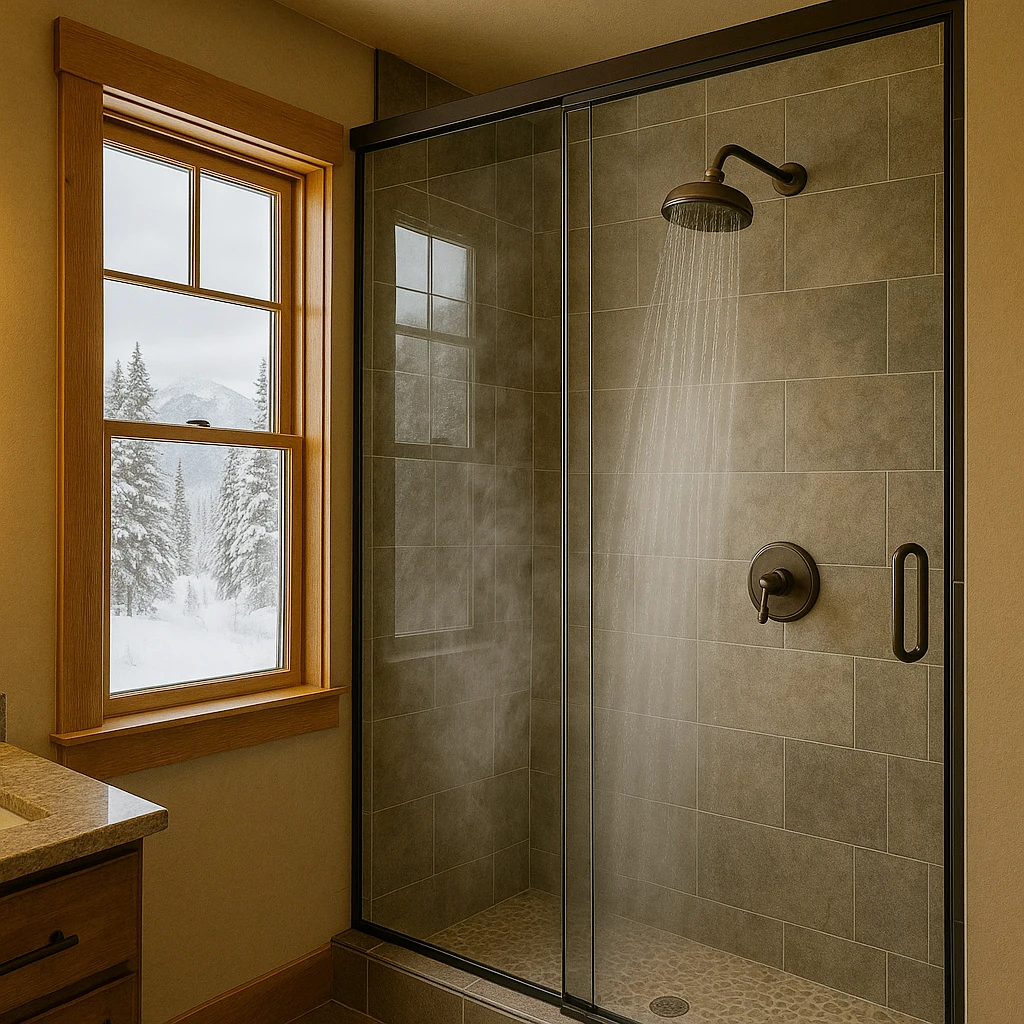
Yes. A properly sized tankless water heater can deliver the same outlet temperatures as a traditional tank model. Most modern units allow set points from about 100°F to 140°F, while many tank heaters are set near 120°F from the factory. The key to real-world performance is correct sizing and installation for your home and climate.
Tankless vs. Traditional Water Heaters
Tank water heaters store a volume of preheated water. Tankless water heaters heat water as it flows through the heat exchanger. Both can reach 120°F or higher. The difference is that tankless output depends on the flow rate at a given moment and the temperature rise required.
How Cold Climate Affects Performance
In Colorado mountain communities, incoming water can be near 40°F in winter. Reaching 120°F requires an 80° temperature rise. In warmer regions with 70°F incoming water, the rise is only 50°. The colder the groundwater, the more capacity your tankless unit needs to hold temperature during peak use.
Choosing the Right Size for Grand County Homes
Two factors determine the right size:
- Flow rate (GPM): Total gallons per minute needed when fixtures run at the same time.
- Temperature rise: Outlet set point minus incoming water temperature.
Example Simultaneous Use Scenarios
| Use Case | Typical Flow | Notes for 120°F Output in Cold Months |
|---|---|---|
| One shower | 1.8–2.5 GPM | Most mid-size units handle this easily at 80° rise |
| Shower + lavatory | 2.5–3.0 GPM | Requires moderate capacity at 80° rise |
| Shower + washing machine | 3.5–4.5 GPM | Often needs higher-BTU model for stable temperature |
Temperature Control and Safety
- Set the unit to around 120°F for daily use.
- Install thermostatic mixing valves where needed to reduce scald risk.
- Use digital controls to lock in set points and avoid fluctuations.
Installation Factors That Improve Results
- Gas supply and venting: Ensure the unit receives the required BTU input and correct vent length.
- Water quality: Hard water can scale heat exchangers. Include treatment if needed.
- Recirculation: Optional recirculation loops or demand pumps shorten hot water wait times in larger homes.
Benefits Beyond Temperature
- Continuous hot water when sized correctly
- High efficiency compared with many tank models
- Long service life with proper maintenance
Local Expertise for Colorado Conditions
Grand Lake Plumbing & Heating has served Colorado homeowners for more than 100 years. Our team sizes and installs tankless systems for the altitude, groundwater temperatures, and fixture layouts common in mountain homes.
Frequently Asked Questions
Will a tankless water heater keep up during winter?
Yes, if the unit is sized for your peak flow at the required temperature rise. Colder incoming water means you need more capacity.
What set temperature should I use?
Many households choose 120°F. This balances comfort, safety, and energy use.
Do I need water treatment?
If you have hard water, a scale filter or softening solution helps protect the heat exchanger and maintain performance.
Can I add recirculation for faster hot water?
Yes. A recirculation loop or demand pump can reduce wait times, which is useful in larger or multi-level homes.
Ready to go tankless? Contact Grand Lake Plumbing & Heating for a site visit and right-sized recommendation for your Grand County home.
